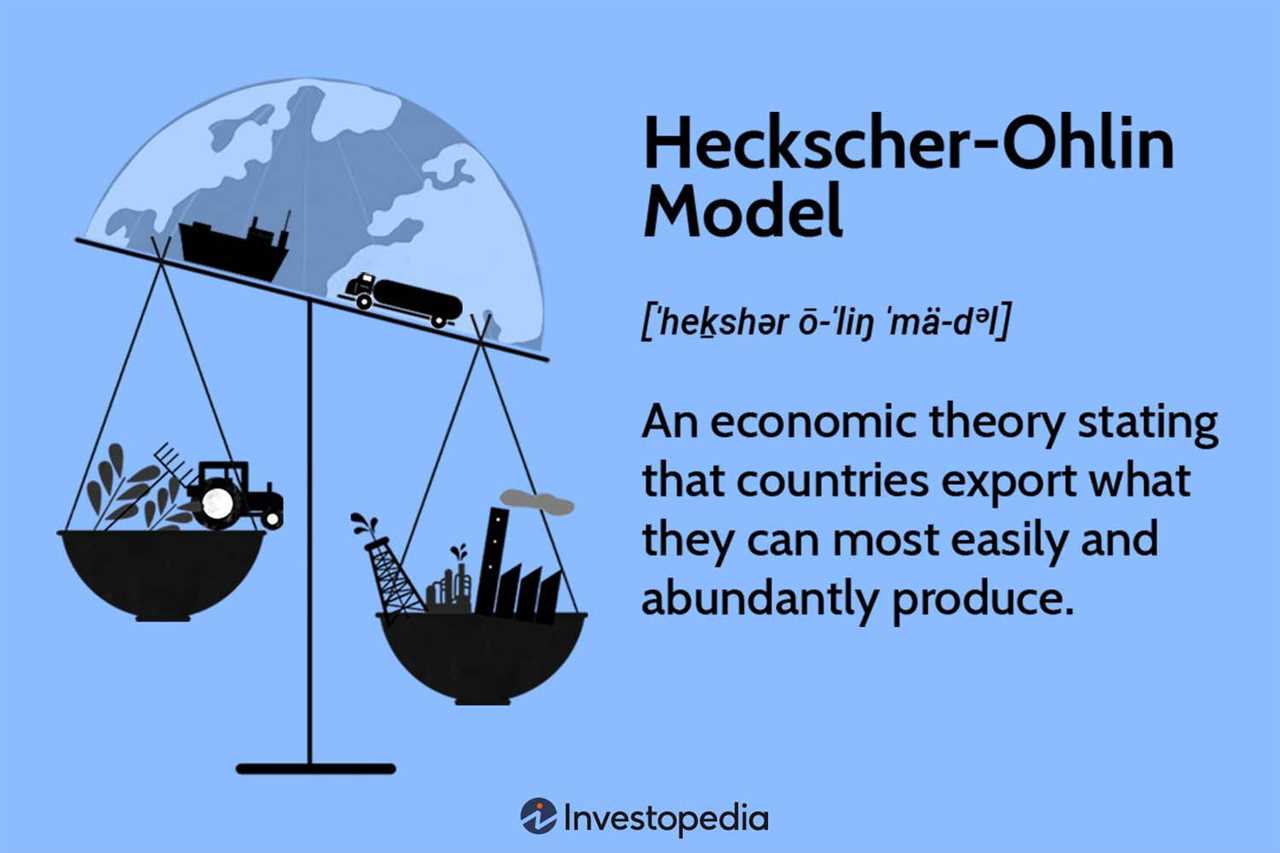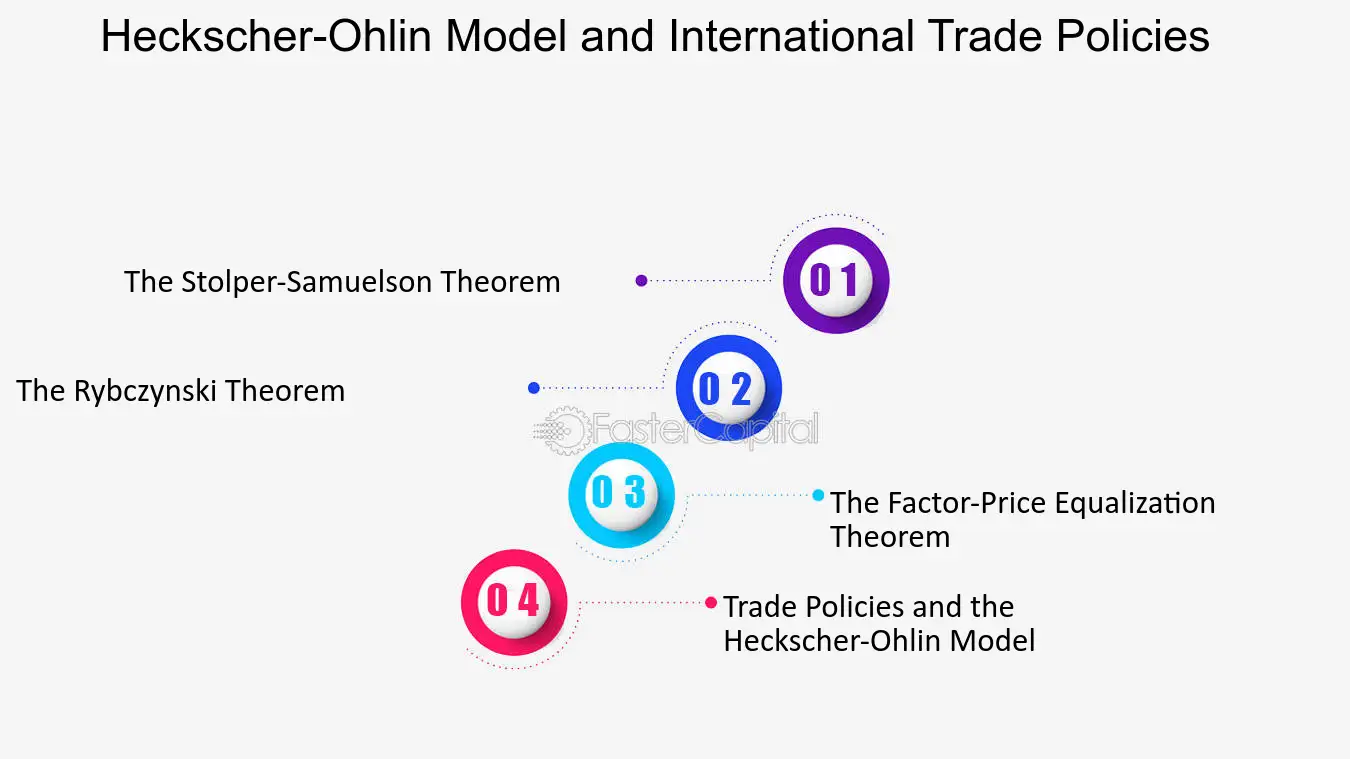Heckscher-Ohlin Model: Definition, Evidence, and Real-World Example

The Heckscher-Ohlin Model is an economic theory that explains international trade patterns based on the differences in factor endowments between countries. According to this model, countries will specialize in and export goods that require factors of production that they have in abundance, while importing goods that require factors of production that they lack.
The Heckscher-Ohlin Model is based on the assumption that countries differ in their factor endowments, which refer to the quantities of labor, capital, and land that a country possesses. It suggests that countries with an abundance of a certain factor will have a comparative advantage in producing goods that require that factor. For example, a country with a large amount of skilled labor will have a comparative advantage in producing high-tech goods.
There is evidence supporting the Heckscher-Ohlin Model from empirical studies. These studies have found that countries tend to export goods that are intensive in their abundant factors of production and import goods that are intensive in their scarce factors of production. This supports the idea that factor endowments play a significant role in determining trade patterns.
A real-world example of the Heckscher-Ohlin Model is the trade relationship between the United States and China. The United States is abundant in capital and skilled labor, while China is abundant in low-skilled labor. As a result, the United States exports capital-intensive goods, such as machinery and aircraft, to China, while China exports labor-intensive goods, such as textiles and electronics, to the United States.
What is the Heckscher-Ohlin Model?
The model is based on the assumption that countries have different relative endowments of labor, capital, and land. It suggests that countries will specialize in and export goods that require abundant factors of production, while importing goods that require scarce factors.
According to the Heckscher-Ohlin Model, a country with a high abundance of labor will have a comparative advantage in labor-intensive goods, while a country with a high abundance of capital will have a comparative advantage in capital-intensive goods. This is because countries can produce goods more efficiently and at a lower cost when they have a greater availability of the factors of production required.
The Heckscher-Ohlin Model is based on the idea that trade is driven by differences in factor endowments, rather than differences in technology or consumer preferences. It suggests that countries will benefit from trade by specializing in the production of goods that align with their factor endowments and importing goods that require factors they lack.
Evidence supporting the Heckscher-Ohlin Model

There is significant evidence that supports the Heckscher-Ohlin Model. One of the key pieces of evidence is the observed patterns of trade between countries. Empirical studies have consistently shown that countries tend to export goods that are intensive in their abundant factors of production, while importing goods that are intensive in their scarce factors of production.
For example, countries with abundant labor resources tend to specialize in and export labor-intensive goods, such as textiles and garments, while countries with abundant capital resources tend to specialize in and export capital-intensive goods, such as machinery and vehicles. This pattern of trade is consistent with the predictions of the Heckscher-Ohlin Model.
Furthermore, studies have also found a strong correlation between a country’s factor endowments and its comparative advantage in certain industries. For instance, countries with a high level of skilled labor tend to have a comparative advantage in industries that require skilled labor, such as high-tech manufacturing or software development.
In addition, empirical research has shown that countries with similar factor endowments tend to trade more with each other. This finding supports the idea that factor endowments play a crucial role in determining trade patterns.
Real-World Example of the Heckscher-Ohlin Model

A real-world example of the Heckscher-Ohlin model can be seen in the trade relationship between the United States and China. The United States is a capital-abundant country, meaning it has a relatively high capital-to-labor ratio, while China is a labor-abundant country, meaning it has a relatively high labor-to-capital ratio.
Based on the Heckscher-Ohlin model, the United States would be expected to export capital-intensive goods, such as machinery and technology, and import labor-intensive goods, such as textiles and apparel, from China. On the other hand, China would be expected to export labor-intensive goods and import capital-intensive goods from the United States.
This trade pattern can be observed in reality. The United States is one of the largest exporters of machinery and technology, while China is one of the largest exporters of textiles and apparel. Additionally, the United States imports a significant amount of consumer goods from China, which are labor-intensive products.
| Country | Main Exports | Main Imports |
|---|---|---|
| United States | Machinery, technology | Textiles, apparel |
| China | Textiles, apparel | Machinery, technology |

Emily Bibb simplifies finance through bestselling books and articles, bridging complex concepts for everyday understanding. Engaging audiences via social media, she shares insights for financial success. Active in seminars and philanthropy, Bibb aims to create a more financially informed society, driven by her passion for empowering others.
